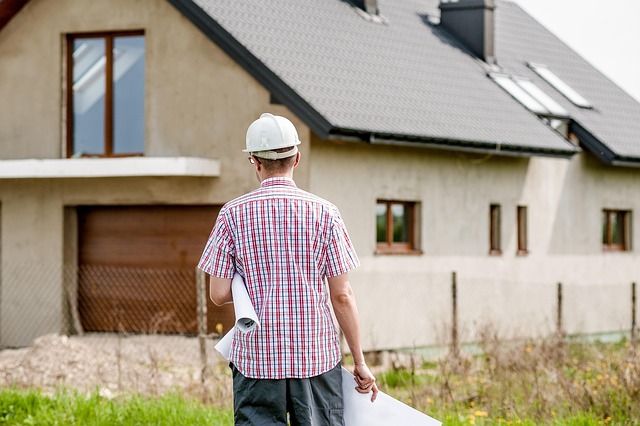Optimizing Albany’s Parking: Striping, Safety, and Municipal Paving Experts
Parking lot striping is a critical aspect of urban management, ensuring safety and efficiency in Albany, NY. A reputable municipal paving contractor o…….
In the realm of urban infrastructure development, municipal paving contractors play a pivotal role in shaping the physical landscape of cities. Among these, the city of Albany stands out as a hub for innovative paving solutions and sustainable urban planning. This article delves into the intricacies of ‘Municipal Paving Contractor Albany’, exploring its definition, global impact, economic significance, technological advancements, regulatory framework, challenges, successful case studies, and future prospects. By the end, readers will gain a comprehensive understanding of this critical sector within the construction industry.
A municipal paving contractor is a specialized construction company responsible for the installation, maintenance, and repair of paved surfaces in urban areas. In the context of Albany, these contractors are tasked with transforming public spaces, roads, parking lots, and sidewalks into functional, safe, and aesthetically pleasing environments. Their work encompasses various materials, techniques, and technologies to ensure long-lasting and sustainable infrastructure.
Paving Materials: Asphalt, concrete, cobblestones, and permeable pavers are commonly used in Albany’s municipal paving projects. Each material has unique properties, catering to different surface requirements.
Construction Techniques: This includes hot mix asphalt (HMA) paving, concrete paving, mill and fill, and slurry sealing. Techniques are chosen based on factors like project scope, weather conditions, and desired surface characteristics.
Equipment: Modern municipal contractors utilize advanced equipment such as pavers, rollers, brooms, and jointing machines to ensure precision and efficiency in paving operations.
The concept of municipal paving has evolved over centuries, from traditional cobblestone streets to modern asphalt and concrete surfaces. In Albany’s case, the need for improved transportation and urban mobility has driven the development of efficient paving systems. Over time, the city has seen the adoption of advanced technologies, such as rubberized asphalt and permeable pavers, promoting environmental sustainability and water management.
Albany’s municipal paving practices have global implications due to the city’s reputation as an innovation hub. The successful implementation of eco-friendly paving solutions in Albany has inspired other urban centers worldwide, leading to a trend towards sustainable infrastructure development.
Sustainability: A growing emphasis on environmentally friendly materials and techniques is shaping the industry globally. Albany’s adoption of permeable pavers and recycled asphalt is a prime example.
Smart Cities: The integration of technology in paving systems, such as sensors for traffic monitoring and road condition assessment, is gaining traction. Albany has been at the forefront of this trend, utilizing smart paving solutions to enhance urban intelligence.
Digitalization: Digital project management tools, 3D modeling, and remote sensing technologies are revolutionizing municipal paving, allowing for more efficient planning and execution.
Different regions worldwide have unique challenges and approaches:
North America: Known for its advanced road construction techniques, North America focuses on high-performance paving materials and innovative maintenance strategies.
Europe: Emphasizing sustainability and historical preservation, European cities often incorporate traditional materials like cobblestones alongside modern techniques.
Asia: Rapid urbanization drives the need for efficient, cost-effective paving solutions in Asian metropolitan areas, with a focus on large-scale infrastructure development.
The municipal paving contractor market is influenced by various factors:
Government Infrastructure Spending: Public investment in urban renewal and road development drives the demand for paving services.
Urbanization and Population Growth: Rapid city expansion increases the need for new roads, parking lots, and sidewalks.
Environmental Regulations: Stringent environmental standards prompt contractors to adopt eco-friendly practices, impacting material choices and costs.
Albany’s economy, fueled by its thriving services sector, provides a stable foundation for municipal paving contractors:
Public-Private Partnerships (PPPs): These partnerships enable cost-sharing and expertise pooling, attracting private investment in public infrastructure projects.
Government Grants and Incentives: Local authorities offer financial incentives to promote the adoption of sustainable paving practices, fostering innovation.
Long-Term Contracts: Secure, long-term contracts with municipalities provide stability and encourage contractors to invest in advanced equipment and training.
Rubberized Asphalt: Blending rubber from recycled tires with asphalt improves durability and reduces noise pollution, making it a popular choice for Albany’s streets.
Permeable Pavers: These allow water infiltration, reducing stormwater runoff and promoting local groundwater recharge, which is critical in areas facing water scarcity.
Traffic Sensors: Embedded sensors monitor traffic flow, helping municipalities optimize signal timings and reduce congestion.
Road Condition Monitoring: Remote sensing technologies enable continuous surveillance of road conditions, facilitating proactive maintenance and repair.
3D Printing of Pavements: This emerging technology offers cost-effective, efficient, and customizable pavement construction, potentially revolutionizing the industry.
Autonomous Paving Machines: The development of self-driving paving equipment could enhance productivity and safety on construction sites.
National Road Construction Guidelines: These provide standards for road design, materials, and construction methods, ensuring consistency across the country.
Environmental Protection Regulations: Strict guidelines govern the disposal of construction waste and encourage the use of recycled materials, aligning with Albany’s green initiatives.
Local Government Regulations: Municipal authorities in Albany enforce building codes and permits, ensuring compliance with paving standards and safety regulations.
Transportation Department Standards: State or provincial transportation departments set requirements for road construction, maintenance, and repair, often collaborating with local contractors.
Cost Overruns and Delays: Complex paving projects often face budget and timeline challenges due to unforeseen site conditions and material availability issues.
Workforce Shortages: Skilled labor shortages impact the industry, hindering project execution and requiring contractors to invest in training programs.
Environmental Concerns: Despite sustainable practices, construction activities still generate environmental impacts, prompting contractors to adopt more eco-conscious methods.
Lack of Standardization: Inconsistent paving techniques across regions can lead to uneven road surfaces and safety hazards. Standardized training programs and industry collaborations can address this.
Public Nuisance during Construction: Long-term construction projects disrupt public spaces, leading to criticism. Effective communication strategies and community engagement can mitigate these issues.
Material Sourcing and Supply Chain Disruptions: Dependence on specific materials and global supply chains makes paving contractors vulnerable to price fluctuations and shortages. Diversifying material sources and adopting local materials can help.
Location: Downtown Albany
Challenge: Renovate and resurface a busy urban street, improving traffic flow and reducing environmental impact.
Solution: Implement a rubberized asphalt surface with permeable drainages systems. Install smart traffic sensors to optimize signal timings, reducing congestion and emissions.
Outcome: The project resulted in a smoother, more durable road surface, improved stormwater management, and reduced noise pollution, enhancing the overall urban environment.
Location: A local shopping mall
Objective: Upgrade an aging parking lot with eco-friendly materials and technologies while increasing capacity.
Solution: Utilize recycled concrete aggregate for base layers and permeable pavers for the surface. Incorporate a rainwater harvesting system to reduce stormwater runoff.
Impact: The revamped parking lot not only increased space but also significantly reduced the facility’s environmental footprint, setting a benchmark for sustainable infrastructure development.
Smart Cities Infrastructure: The integration of advanced paving technologies with IoT devices and data analytics will continue to grow, creating opportunities for innovative solutions.
Renewable Energy Integration: As renewable energy sources become more prevalent, paving contractors may explore ways to incorporate solar panels or heat-absorbing materials into road surfaces.
3D Printed Infrastructure: While still in the experimental phase, 3D printing technology for pavements could revolutionize construction efficiency and design flexibility.
Autonomous Construction Equipment: The adoption of autonomous paving machines may increase productivity while reducing labor costs.
Continuous Training and Education: Contractors should invest in training programs to stay updated with new technologies, ensuring a skilled workforce.
Sustainable Material Sourcing: Diversifying material sources and exploring local, eco-friendly alternatives will be crucial for future projects.
Public-Private Collaboration: Partnerships between contractors, municipalities, and research institutions can drive innovation and knowledge sharing.
‘Municipal Paving Contractor Albany’ represents a dynamic sector at the intersection of infrastructure development, sustainability, and urban planning. Through technological advancements, innovative practices, and strategic partnerships, contractors in Albany are shaping the city’s landscape while addressing global challenges. As the industry evolves, the focus on efficiency, environmental stewardship, and smart infrastructure will define its future trajectory, ensuring safer, more sustainable cities worldwide.
Q: How do municipal paving contractors ensure the durability of paved surfaces?
A: Contractors use high-quality materials, proper construction techniques, and advanced surface treatments to enhance pavement durability. Regular maintenance and inspection also play crucial roles in extending surface life.
Q: What role does technology play in modern municipal paving?
A: Technology significantly influences paving operations through digital project management, 3D modeling for design, remote sensing for monitoring, and the integration of smart sensors for traffic and road condition assessment.
Q: How can sustainable paving practices benefit the environment?
A: Eco-friendly materials like permeable pavers and recycled asphalt reduce stormwater runoff, promote water infiltration, and minimize heat island effects. Additionally, these practices contribute to reduced carbon footprints and less construction waste.
Q: Are there any regulations governing municipal paving contracts?
A: Yes, various national and local regulations oversee paving projects, ensuring safety, environmental compliance, and fair contracting practices. These include building codes, transportation department standards, and environmental protection guidelines.
Q: How can contractors address workforce shortages?
A: Contractors should invest in training programs to develop skilled labor, offer apprenticeship opportunities, and collaborate with educational institutions to foster a pipeline of future professionals.

Parking lot striping is a critical aspect of urban management, ensuring safety and efficiency in Albany, NY. A reputable municipal paving contractor o…….

Municipal paving contractors in Albany are crucial for revitalizing sidewalks, ensuring safety, accessibility, and aesthetics in vibrant districts. Th…….